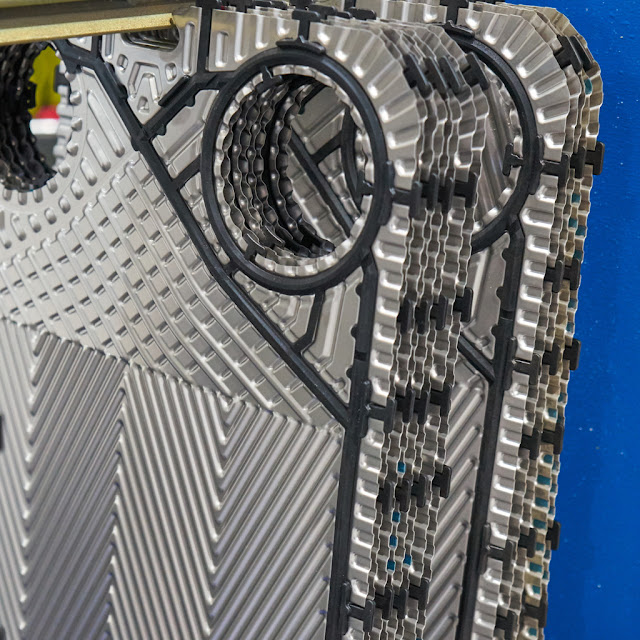TOP 7 REASONS TO PURCHASE A PLATE-AND-FRAME INSTEAD OF A SHELL-AND-TUBE HEAT EXCHANGER
As the two most common heat exchangers, plate-and-frame and shell-and-tube designs, both have a lot to offer when you want to heat or cool a product during processing. Heat exchangers work by transferring heat from one media to another via tubes or plates.
In some applications, however, plate heat exchangers (PHE) have several advantages over shell-and-tube designs.
In this post, we discuss application requirements that make PHE the right choice.
In the following sections, we will show you how a plate heat exchange is the P.E.R.F.E.C.T. choice for your next heat-transfer solution.
- Pressure Drop is Lower
- Efficiency
- Reduced Maintenance
- Footprint is Smaller
- Expandability
- Capital Expense
- Types of Plates
1. PRESSURE DROPS ARE LOWER
Due to the lower area required with a PHE, PHE designs typically have an overall pressure drop substantially lower than a tubular designed for the same specifications. This lower pressure drop adds to the overall energy efficiency of a PHE over a tubular heat exchanger.
Plate heat exchangers are up to five times more efficient than shell-and-tube designs. In many cases, you can utilize more heat by replacing existing shell-and-tube models with compact plate and frame heat exchangers.
The series of plates in a plate-and-frame heat exchanger creates gasketed spaces between plates. These spaces alternate between two fluids—one hot and one cold.
The design delivers very high heat transfer efficiency because the plates create a surface area that’s much larger than shell-and-tube designs that would fit in the same space.
2. EFFICIENCY
Typically, a plate heat exchanger is the right choice because they’re the most efficient and least expensive option.
Plate heat exchangers are up to five times more efficient than shell-and-tube designs.
- Higher heat transfer coefficients can be attained due to the corrugated plates and higher velocities
- Closer temperature approaches due to pure counter current flow, allowing for more heat transfer
- Higher amount of regeneration possible due to these closer temperature approaches
The series of gaskets in a plate-and-frame heat exchanger creates spaces and formed flow paths between plates. These spaces alternate between two fluids—one hot and one cold (Fig. 1).

OVERALL HEAT TRANSFER COEFFICIENT (U VALUE)
The heat transfer coefficient describes the heat energy transferred by the two designs (PHE vs. Shell and tube, Fig. 2, below). The coefficient is a multiplier in the heat transfer equation, so a higher number means more heat transfer occurs. PHE's achieve their improved heat transfer coefficients while having a much smaller footprint and lower weight than their shell-and-tube counterparts.
KEY CHARACTERISTICS OF PROCESSED FLUIDS
Heat transfer inside a heat exchanger results in temperature changes in both fluids, lowering the temperature of the warmer fluid and raising the temperature of the cooler fluid.
Fluid properties partially determine the type of heat exchanger for the application.
FLUID TYPES
- Water
- Oils
- Chemicals
- Cosmetics
- Pharmaceuticals
THERMAL PROPERTIES OF FLUIDS
- Temperature
- pH
- Flow rate
- Corrosiveness
- Viscosity




Commenti
Posta un commento